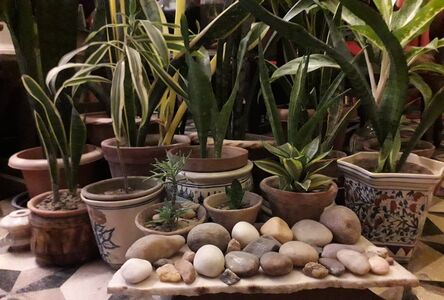In 1984, I visited Japan on a study tour from Anandabazar Patrika Group and was an intern for a short while with The Asahi Shimbun, the second largest circulated newspaper in Japan.
During this time I visited a Shinto shrine in the outskirts of Tokyo. As I entered I found that there was no formal temple and my guide just asked me to walk along. I started walking among large trees and in between found a small water body decorated with flowers. I went further and found that under a tree was a stone and it was draped in plants. Till further, a small rivulet. Finally I came to a spot and found hundreds of people sitting in the grass facing a small mountain. They were all in meditation, leaving spaces around, for people to slowly saunter around without disturbing.
Meiji Shrine is surrounded by Yoyogi Park: a sprawling expanse of green in central west Tokyo. Meiji Jingu Shrine is dedicated to the souls of Emperor Meiji (1852-1912), Japan's first modern, constitutional monarch, and his wife, Empress Shoken (1849-1914).
It is here that I was introduced to Kami. On 15th September 2018, I attended a Memorial Prayer Meeting at Santineketan for the sad demise of my friend, Shivaditya Sen, when I was coming out I picked up a stone from the garden and I told my nephew Premananda, who was with me, that this is in memory of Shiv. In July 2019 I went to Bangalore for a vacation and visited my friend Gargi. When leaving I was touched by her home which was so very kind to animals. I picked up a pebble and told her that I will write about it someday.
Kami are the central objects of worship for the Shinto belief. Shinto is a religion which originated in Japan. Shinto is polytheistic and revolves around the kami: "gods" or "spirits", supernatural entities believed to inhabit all things.
Kami are usually associated with a specific objects like stone or pebble. Kami is also associated with a place, often one that has a vibration of a particular feeling, like a prominent feature in the landscape such as a mountain, waterfall, volcano or a distinctive tree.
Physical objects or places in which the kami are believed to have a presence are termed shintai; objects inhabited by the kami that are placed in the shrine are known as go-shintai. Objects commonly chosen for this purpose include stones, beads, mirrors, swords, and inscribed tablets.
The term Kami is conceptually fluid and cannot be exactly translated. In Japanese it is often applied to the power of phenomena that inspire a sense of wonder and awe in the beholder. Kitagawa referred to this as "the kami nature", stating that he thought it "somewhat analogous" to the Western ideas of the numinous and the sacred. Kami are seen to inhabit both the living and the dead, organic and inorganic matter, and natural disasters like earthquakes, droughts, and plagues; their presence is seen in natural forces such as the wind, rain, fire, and sunshine. Shinto respects the actual phenomena of the world itself as being divine.
In Japan, kami have been venerated since prehistory, and in the Yayoi period were regarded as being formless and invisible. It was only under the influence of Buddhism that they were depicted anthropomorphically; statues of the kami are known as shinzo.
Kami are believed to be capable of both benevolent and destructive deeds; if warnings about good conduct are ignored, the kami can mete out punishment called shinbatsu, often taking the form of illness or sudden death. Some kami, referred to as the magatsuhi-no-kami or araburu kami, are regarded as being essentially malevolent and destructive. Offerings and prayers are given to the kami to gain their blessings and to dissuade them from engaging in destructive actions.
Kami are not different from humanity, with it being possible for humans to become kami. Dead humans are sometimes venerated as kami, being regarded as protector or ancestral figures. One of the most prominent examples is that of the Emperor Ōjin, who on his death was enshrined as the kami Hachiman, believed to be a protector of Japan and a kami of war. In Japanese culture, ancestors can be viewed as a form of kami.
Image : Kami Stones of People and Places at my home.

